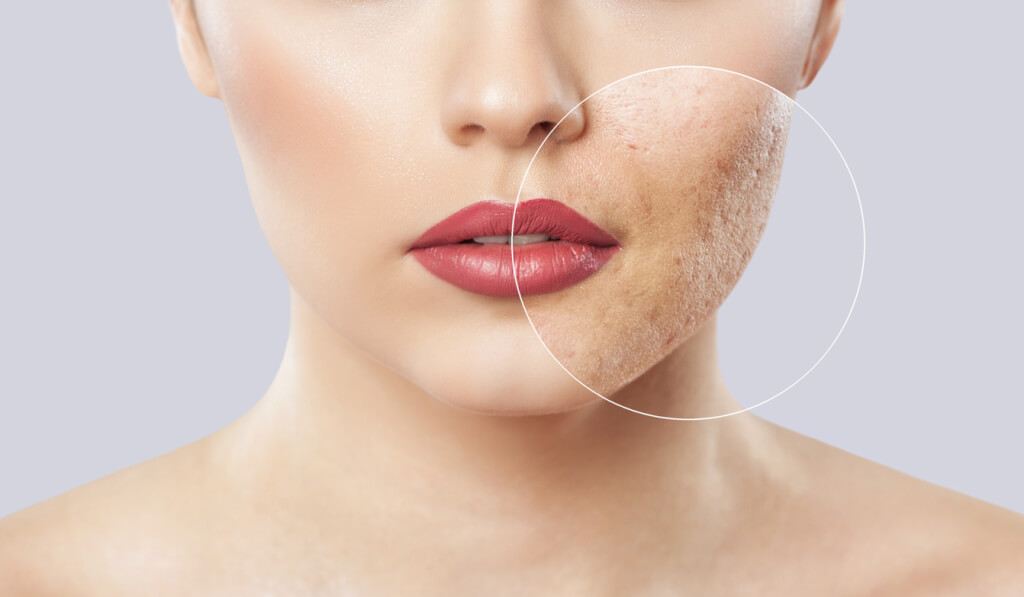Advertising Disclosure
The 7 most common skin care mistakes, according to a dermatologist

It’s hard to keep up with the ever-changing skin care trends on social media. And it’s even harder find solid advice about what’s safe and effective for your skin. The difference between expert tips and and tips that are useless or even harmful isn’t always clear. So we spoke with top-rated cosmetic dermatologist Dr. Michele Green for her professional advice. Dr. Green shed some light on the most common skin care mistakes she sees, and gave us her recommendations for how to fix them.
1. Overusing Retin-A

A graduate of Yale University, Dr. Michele S. Green is a world-renowned cosmetic dermatologist in New York.
Retin-A is a product that is not suited for all skin types. Dr. Green says that she sees many patients prescribed Retin-A. But they were not always clear on using this prescription product. These patients end up with irritated, red skin. And they often have dry patches and peeling that the products makes worse.
“This product can be very drying,” Dr. Green says. “And if you have sensitive skin, or a tendency for eczema or rosacea, using Retin-A can make your skin worse.”
If you use too much Retin-A or use it with the wrong skin type, it can make your skin look much worse.
So how much is the right amount? According to Dr. Green, “For proper application when using Retin-A, apply just a pea-sized amount at nighttime. You can even dilute that pea-sized amount with an equal size amount of moisturizer.”
Dr. Green recommends a retinol product instead. Retinol products come in different strengths and are much milder and easier to tolerate. They offer much the same benefit with fewer side effects.
2. Applying spray sunscreen to your face
One of the other most common skin care mistakes Dr. Green sees are patients using spray sunscreens on their face.
Some people apply a spray sunscreen to their body outdoors, then use the excess sunscreen from their hands to apply on their face. But according to Dr. Green, “Spray sunscreens do not work nearly as well in protecting you from the sun, especially on the face.” Instead, Dr. Green recommends using an SPF 50 in the form of a cream or lotion and applying a generous amount to your face.
It’s also important to apply your sunscreen indoors at least 15 minutes before you go outdoors in the sun. This will ensure the best protection for your skin.
3. Using abrasive exfoliators to treat acne
Dr. Green finds that patients often use a combination of products with benzoyl peroxide or salicylic acid. Then they also use abrasive cleansers, scrubs and treatment products. Overdoing it this way if one of the most common skin care mistakes.
“Over-cleansing and over-treating your skin will only serve to damage the top layer of your skin,” Dr. Green told us. This approach makes your skin more susceptible to infections.
Instead, Dr. Green recommends using a gentle cleanser or toner. Follow this with a non-abrasive mask.
Your best look for products designed for sensitive skin because they’ll prevent you from stripping your skin and leaving you with irritating acne breakouts.
4. Not making seasonal adjustments to your routine
Dr. Green recommends switching your skin care products with seasonal changes. By doing this, you adapt to the needs of your skin.
“During the winter, your skin is drier and in need of extra hydration,” Dr. Green says. “While during the summer months, most of our skin is generally more oily.” So if you use an excessive amount of products or thick moisturizers during the summer, they can clog your pores. As a result, you may end up with more acne and blackheads.
During the winter, use more hydrating moisturizers and serums to keep your skin from drying out.
For the summer months, use cleansers geared towards oily skin. But be cautious of skin care formulas that are too harsh or drying. In fact, it may seem counterintuitive, but they can make your skin even more oily by making it overcompensate by producing extra oil.
5. Replacing sunscreen with BB cream or SPF moisturizer
Dr. Green often hears from patients that the sunscreen they use is a BB cream or moisturizer with SPF. She says, “These types of coverage may be good enough during the winter. But during the summer one always needs to apply an SPF 50 as the last layer, for proper sun protection, before leaving the house.”
After a few hours outdoors, it’s essential to re-apply sunscreen to protect your skin, especially after sweating or swimming. And as always, consult with your dermatologist to make sure you are using the correct SPF and coverage for you.
6. Applying sunscreen only in the morning
Countless patients tell Dr. Green that they do not know why they are getting tan or new sunspots. But often, these patients report that they use sunscreen only once in the morning.
According to Dr. Green, “Only applying your sunscreen in the morning causes you to have increased sun damage, sun spots, wrinkles, and melasma.”
On the packaging for many sunscreens, the instructions tell you to re-apply every 90 minutes.
Also, Dr. Green encourages that you remember to use sunscreen on your neck, chest, ears, and any other sun-exposed areas.
7. Using self-tanners on your face
Do you use self-tanners on your face? If so, you may be causing unintended acne breakouts.
“It’s one thing to use self-tanners on the body,” says Dr. Green. “But often, patients do not realize that self-tanners can cause acne and clogged pores on your face.”
Instead, she recommends that you use oil-free makeup and bronzers to have that same tanned, sun-kissed glow without the side effects of comedonal and pustular acne.
If you are interested in setting up a consultation with Dr. Michele Green, you can schedule a visit online. Here you can also see all the services that she offers, both cosmetic and medical.





